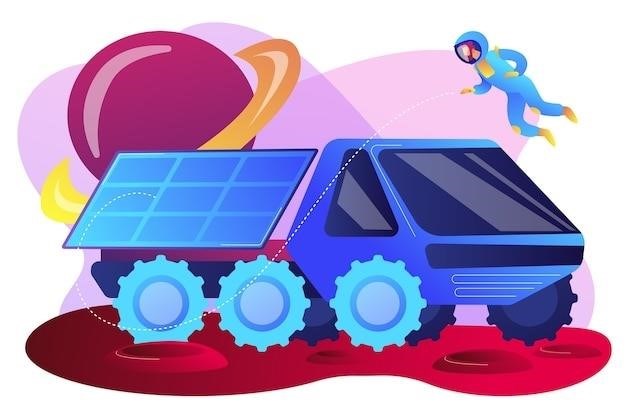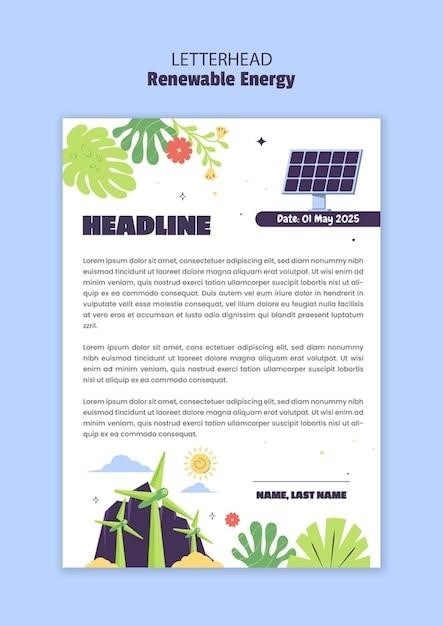Solar Oven Science Project⁚ A Comprehensive Guide
This comprehensive guide provides a step-by-step approach to building and testing a solar oven, making it an engaging science project for students of all ages; The guide delves into the science behind solar ovens, outlines the materials required, and offers detailed instructions for construction. It also includes ideas for science fair projects, safety precautions, and the benefits of using solar ovens. You’ll learn how to harness the power of the sun to cook food and understand the principles of heat transfer and insulation.
Introduction
Embark on an exciting journey into the world of renewable energy with this comprehensive guide to building and testing a solar oven. This project is not just a fun and engaging activity, but also a valuable learning experience that delves into the principles of solar energy, heat transfer, and insulation. You’ll learn how to harness the power of the sun to cook food, providing a sustainable and eco-friendly alternative to traditional cooking methods. This guide is designed to be accessible to students of all ages, offering detailed instructions and tips for a successful solar oven project. Whether you’re looking for a captivating science fair project or simply a fun and educational activity for the whole family, this guide will provide you with everything you need to get started.
The Science Behind Solar Ovens
Solar ovens operate on the fundamental principles of heat transfer and energy absorption. The primary source of energy is the sun, which emits radiant energy in the form of light and heat. When sunlight strikes the dark surface of a solar oven, it is absorbed, converting the light energy into heat. The oven’s design incorporates features that maximize heat absorption and minimize heat loss, such as a reflective surface to direct sunlight into the oven, insulation to trap the heat inside, and a transparent cover to allow sunlight to penetrate while preventing heat from escaping. The heat trapped inside the oven is then used to cook food. The process is analogous to a greenhouse effect, where sunlight is allowed to enter but the heat is trapped inside, creating a warm environment.
Materials Needed for Your Solar Oven
To build a basic solar oven, you’ll need a few readily available materials. A sturdy cardboard box, ideally a pizza box, serves as the oven’s foundation. Aluminum foil is essential for reflecting sunlight into the oven, and clear plastic wrap acts as a window, allowing sunlight to enter while trapping heat inside. Black construction paper is used to line the interior of the oven, absorbing the radiant heat and transferring it to the food. You’ll also need a ruler, scissors, tape, and a thermometer to monitor the oven’s temperature. Optional materials include a piece of wood for added stability, a cookie sheet for cooking, and a pot or pan to hold water for heat regulation. These materials are readily available and can be found in most households, making the project accessible and affordable.
Building Your Solar Oven⁚ Step-by-Step Instructions
Building a solar oven is a fun and educational project, and the process is relatively straightforward. Begin by lining the inside of the cardboard box with black construction paper, ensuring it covers the entire bottom and sides. Then, cut a square flap on the top of the box, ensuring it’s large enough to allow sunlight to enter. Cover the flap with aluminum foil, ensuring it’s smooth and reflective. Next, cut a piece of clear plastic wrap slightly larger than the flap and secure it over the opening, creating a window that allows sunlight to enter but traps heat inside. For added stability, consider attaching a piece of wood to the bottom of the box. Place the oven in a sunny spot, adjusting its angle to maximize sunlight exposure. Finally, use a thermometer to monitor the oven’s temperature, allowing you to track its heating process. Remember to experiment with different materials and designs to optimize your solar oven’s performance.
Testing Your Solar Oven
Once you’ve built your solar oven, it’s time to put it to the test! Start by choosing a sunny day and placing your oven in a spot that receives direct sunlight. To monitor the oven’s temperature, use a thermometer placed inside. You can begin with simple tests, such as heating water or melting chocolate. Record the time it takes for the oven to reach a specific temperature and observe how different materials respond to the heat. For a more complex test, try baking a simple dish like cookies or a s’more. Pay attention to how long it takes to cook the food and note any adjustments you need to make to the oven’s design. Documenting your results and observations is crucial for understanding the effectiveness of your solar oven and identifying areas for improvement. Remember, the goal is to experiment and learn, so have fun with the process!
Solar Oven Science Fair Project Ideas
A solar oven project can be an excellent choice for a science fair, offering an opportunity to explore various scientific concepts and showcase your creativity. Here are a few project ideas to get you started⁚
- Investigate the impact of different insulation materials on oven temperature. Compare the performance of materials like bubble wrap, newspaper, or even clothing to determine which provides the best insulation.
- Experiment with the angle of the oven’s reflector to maximize heat absorption. Test different angles and record the corresponding temperatures to see how the angle affects the oven’s efficiency.
- Design and build a solar oven that can cook a specific dish. Choose a dish that requires a specific temperature and cooking time, then design your oven to meet those requirements.
- Explore the potential of solar ovens for water purification. Investigate how solar ovens can be used to pasteurize water and make it safe for drinking.
Remember to clearly define your hypothesis, identify your variables, and conduct thorough testing. By presenting your findings in a compelling manner, you can demonstrate your understanding of solar energy and its practical applications.

Safety Precautions for Using a Solar Oven
While solar ovens are a safe and environmentally friendly way to cook, it’s important to follow certain safety precautions to ensure a safe and enjoyable experience. Here are some essential tips⁚
- Never leave a solar oven unattended when in use. The oven can reach high temperatures, and leaving it unattended could pose a fire hazard.
- Position the oven on a stable surface in a location free from obstructions. Make sure the oven is not blocking any walkways or near flammable materials.
- Avoid using the oven near windy areas. Wind can disrupt the oven’s heat concentration and may even blow it over.
- Use oven mitts or gloves when handling hot items. The oven and its contents can become very hot, so it’s crucial to protect your hands.
- Supervise children when they are using a solar oven. Children should always be under adult supervision to ensure their safety.
By following these simple safety precautions, you can ensure a safe and enjoyable experience with your solar oven.
The Benefits of Solar Ovens
Solar ovens offer a compelling alternative to traditional cooking methods, boasting a range of benefits⁚
- Environmentally Friendly⁚ Solar ovens harness the power of the sun, eliminating the need for fossil fuels or electricity, reducing carbon emissions and promoting sustainability.
- Cost-Effective⁚ Once built, solar ovens require no ongoing fuel costs, making them a cost-effective cooking solution, especially in regions with limited access to electricity or fuel.
- Versatile Cooking⁚ Solar ovens can be used to cook a wide variety of dishes, from simple meals to more complex recipes, including baking, roasting, and even boiling water.
- Improved Food Safety⁚ Solar ovens can achieve high cooking temperatures, effectively killing bacteria and pathogens, contributing to food safety, especially in areas with limited access to clean water and sanitation.
- Accessible and Easy to Use⁚ Solar ovens are relatively simple to build and operate, making them accessible to people of all ages and skill levels.
Solar ovens offer a sustainable, affordable, and versatile cooking solution that can benefit individuals, communities, and the environment.
Solar Oven Applications Beyond Cooking
While solar ovens are primarily known for their culinary capabilities, their potential extends far beyond simply cooking food. Their ability to harness the sun’s energy opens doors to a variety of applications⁚
- Water Pasteurization⁚ Solar ovens can effectively pasteurize water by reaching temperatures high enough to kill harmful bacteria and pathogens. This is particularly beneficial in areas with limited access to safe drinking water.
- Medical Sterilization⁚ The high temperatures achievable within solar ovens can be used to sterilize medical instruments, making them suitable for use in remote healthcare settings or disaster relief situations.
- Drying Food and Herbs⁚ Solar ovens provide a gentle and natural way to dry fruits, vegetables, and herbs, preserving their flavor and nutrients. This is particularly useful for preserving seasonal harvests and extending shelf life.
- Craft Projects⁚ The heat generated by a solar oven can be used for crafting projects like melting wax, creating jewelry, or even drying clay.
The versatility of solar ovens makes them a valuable tool for various applications beyond cooking, highlighting their potential to contribute to sustainable living and address challenges in diverse contexts.
Building a solar oven is not only a fun and engaging science project but also an excellent way to explore the potential of renewable energy. By harnessing the sun’s energy, we can create a sustainable and eco-friendly method for cooking and other applications. This project encourages critical thinking, problem-solving, and an understanding of basic scientific principles like heat transfer and insulation. Through the construction and testing of a solar oven, students can gain a deeper appreciation for the power of the sun and its role in a sustainable future. Furthermore, the project highlights the importance of innovation and resourcefulness in finding solutions to everyday challenges, particularly in areas where traditional energy sources are scarce. By embracing the principles of solar energy, we can contribute to a cleaner and more sustainable world, one solar oven at a time.
